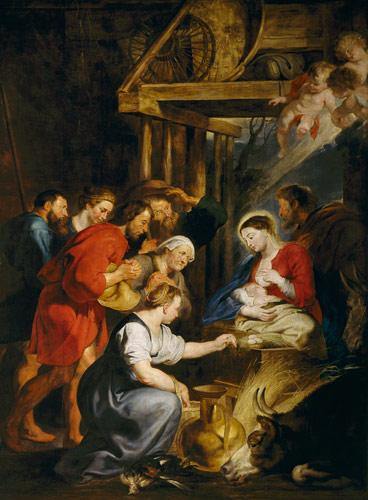Description
The Adoration of the Shepherds by Peter Paul Rubens is a Flemish Baroque masterpiece that has captivated art lovers for centuries. This painting, dating from the 17th century, represents the moment when the shepherds visit the baby Jesus in the manger.
Rubens' artistic style is evident in this work, with his use of the chiaroscuro technique to create a sense of depth and movement in the composition. The central figure of the Virgin Mary is particularly impressive, with her serene expression and deep red dress contrasting against the dark background.
Color is another prominent aspect of this painting. Rubens uses a rich and vibrant palette, with warm, earthy tones that evoke the feeling of a calm and serene night. The details in the clothing of the shepherds and angels are particularly impressive, with a texture and realism that makes them seem almost palpable.
The story behind the painting is also fascinating. Rubens was hired to create this work by the Church of Saint Paul in Antwerp, and is said to have worked on it for several years. The painting was stolen on two occasions, first by the French during the French Revolution and then by the Nazis during World War II. Fortunately, it was recovered on both occasions and is now in the collection of the Museo del Prado in Madrid.
There are many little-known aspects of this painting that make it even more interesting. For example, Rubens is believed to have included his own portrait in the figure of the shepherd in the lower right corner of the composition. Furthermore, the painting has been the subject of numerous interpretations and analysis, with some critics suggesting that it represents the union of the Catholic Church and the Protestant Reformation.

